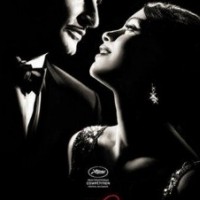
The Orange County Film Society screening of the sorta-silent, black-and-white, buzz-deserving The Artist Monday night drew a packed audience to the historic Lido in Newport Beach, insider stories from executive producer Richard Middleton and supporting actors James Cromwell and Penelope Ann Miller, and a first-ever best picture award. After leading an entertaining post-screening Q&A with The Artist artists, moderator Gregg Schwenk, dual chief of OCFS and the Newport Beach Film Festival, presented the first best picture award bestowed by the nonprofit that shows indie and mainstream movies to society members before the flicks hit the cineplexes.
]
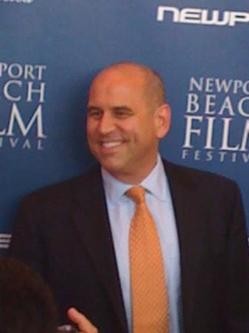
Schwenk mentioned that his festival programmers who fell in love with The Artist while viewing French writer-director Michel Hazanavicius' unusual movie at the most recent Toronto International Film Festival were quickly joined by other staffers (including himself) who saw it subsequently. They then decided to create the inaugural best-picture award from the OCFS, which has been around for five years. (The 13-year-old film festival has its own annual awards for entries.)
“If our small voice can be any help” in filling future seats and award-season ballots for a film that's not on everyone's radar (yet), the society's bump will have been worth it, Schwenk explained. A Palme d'Or nominee at Cannes (where lead actor Jean Dujardin won as best actor), The Artist recently received best picture honors from the New York Film Critics Circle Awards. It's also won audience awards at various festivals, and is considered a contender for the Golden Globes and Academy Awards.
While that's heady company for the OCFS, The Artist is a worthy first choice. It's a visual love letter to Hollywood's golden age of cinema. But I must admit that about a third of the way in, it was starting to feel to me like a mash-up of Singing in the Rain, A Star is Born and The Twilight Zone's “Once Upon a Time” episode with Buster Keaton. That feeling quickly disappeared like an intertitle card as Hazanavicius' simple story and Dujardin's captivating performance washed over me.
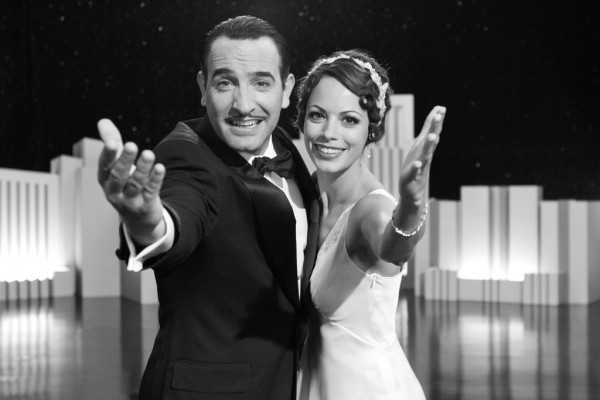
I think it's best if viewers go in knowing no more than I did: that foreign actors are in the leads (Dujardin and Bérénice Bejo) and Academy Award buzz is growing deafening, as is usually the case when constant Oscar campaigners Bob and Harvey Weinstein are attached to a film. Oh, and I also knew Cromwell and Miller were in the cast thanks to the OCFS invitation. Here is the barest plot info: In 1927 Hollywood, silent film star George Valentin (Dujardin) harnesses his toothy/swashbuckling/ol' soft-shoe mojo for boffo box office. But his charmed life changes with the arrival of starlet in the making Peppy Miller (Bejo) and talking pictures.
American audiences that know not of Dujardin will have an easier time buying him as a silent film star than someone already familiar to them like, say, George Clooney. It also helps that the Parisian seems to be having a ball hamming it up for a live audience, eluding captors ala Douglas Fairbanks and snuggling up with his co-star pooch (played by Uggie). OK, now I feel as if too much is being given away. And when I look over my notes from the Q&A with fresh eyes, I see that many of the answers will also make matters worse.
Stop here if you don't want to know any more. Otherwise, an abridged version of my notes follow on the next page . . .
[
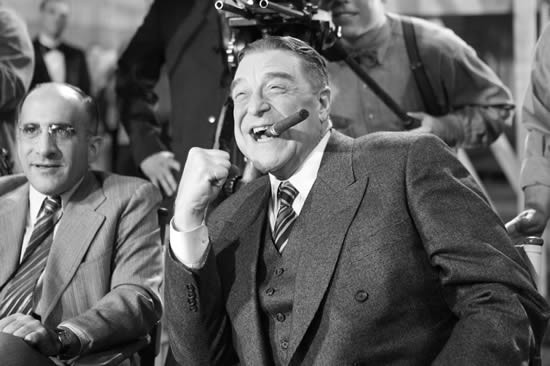
Middleton: It was a roll of the dice for the film's financiers to throw their money into a movie that was black and white and mostly silent except for background music throughout and other noises in some key scenes. The two leads were cast going in, and John Goodman (as producer Al Zimmer) hopped aboard quickly. But the project experienced many well-known American actors turning down supporting roles, with Middleton mentioning Al Pacino and Robert De Niro. The producers were thus pleased when Cromwell at least agreed to meet with Hazanavicius, although they were unsure what to make of their lunch taking hours to complete, thinking wrongly the filmmaker had left dejected and gone to a bar to drown his sorrows. The film was shot on Kodak color stock that was re-saturated to black and white because the only remaining Kodak black-and-white stock made for a film that was too sharp, not grainy enough to pass for movies from the late 1920s. All the music was original by Ludovic Bource except passages from Alfred Hitchcock's 1958 thriller Vertigo (composer: Bernard Herrmann) because Hazanavicius could hear nothing else for those specific scenes. When Harvey Weinstein first saw the film at Cannes, he said, “I love this, I want to share this,” related Middleton, who added, “If it were not for Harvey, we would not be here right now.”

Miller: She did not take the role of Doris (Valentin's wife) for the payday. (“I know I didn't make any money on it,” she said glaring at Middleton.) When her agent further told her it was a silent, black-and-white project with two leads and a director she never heard of, “I said this was right up my alley. I was very intrigued.” It was the simplicity and passion for moviemaking evident in the script that really won her over. “Jean Dujardin carries the film. Without that performance, this movie would not work. And that dog steals every scene.” She lives in a Los Angeles house built in the 1920s and formerly occupied by Dolores del Rio and has always been attracted to Hollywood's glamor days, believing she belongs in that time. “I'm very proud I chose to take a risk and go along for the ride,” she said of The Artist. You'll recall she played opposite Robert Downey Jr. in Chaplin. “I'm a veteran of making silent films. I'm the go-to girl.” As for this particular silent film, Miller said, “I think Robert De Niro and Al Pacino are kicking themselves now.”
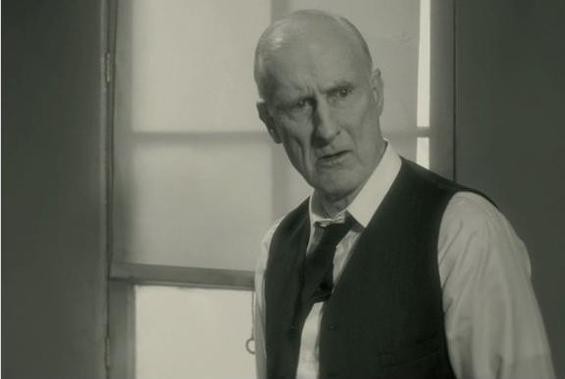
Cromwell: The veteran character actor (Babe, L.A. Confidential) was reluctant to take the role of Valentin's trusty driver, Clifton, worried that the silent approach could prove to be a gimmick. But that long lunch with Hazanavicius won him over, and the final script sealed the deal for the son of noted film director John Cromwell and actress Kay Johnson. Of the film's title, Cromwell said, “The Artist is not the actor, not the star. The Artist is definitely Michel Hazanavicius. The French call him an auteur, the creator of a work of art. I kind of got a sniff of it was going to be something special, but you never know.” It was watching audiences like the one in Newport Beach reacting the way they did that proved to him “why I think it's absolutely perfect.” Asked about the similarities to Singing in the Rain, which also takes place during the transition from silents to talkies (and whose Gene Kelly Dujardin slightly resembles and moves like) Cromwell put it best: “While this is a homage, this film is not derivative to me. It's honestly put together in this vision of this story, which is not only original but contemporary. This one is completely new.” When a woman noted everyone in the audience talks during other movies she's been to but no one in the packed house uttered a peep during The Artist, Cromwell responded with two thumbs up and the observation, “Silence is golden.”
So is the first Orange County Film Society choice for best picture.

OC Weekly Editor-in-Chief Matt Coker has been engaging, enraging and entertaining readers of newspapers, magazines and websites for decades. He spent the first 13 years of his career in journalism at daily newspapers before “graduating” to OC Weekly in 1995 as the alternative newsweekly’s first calendar editor.

